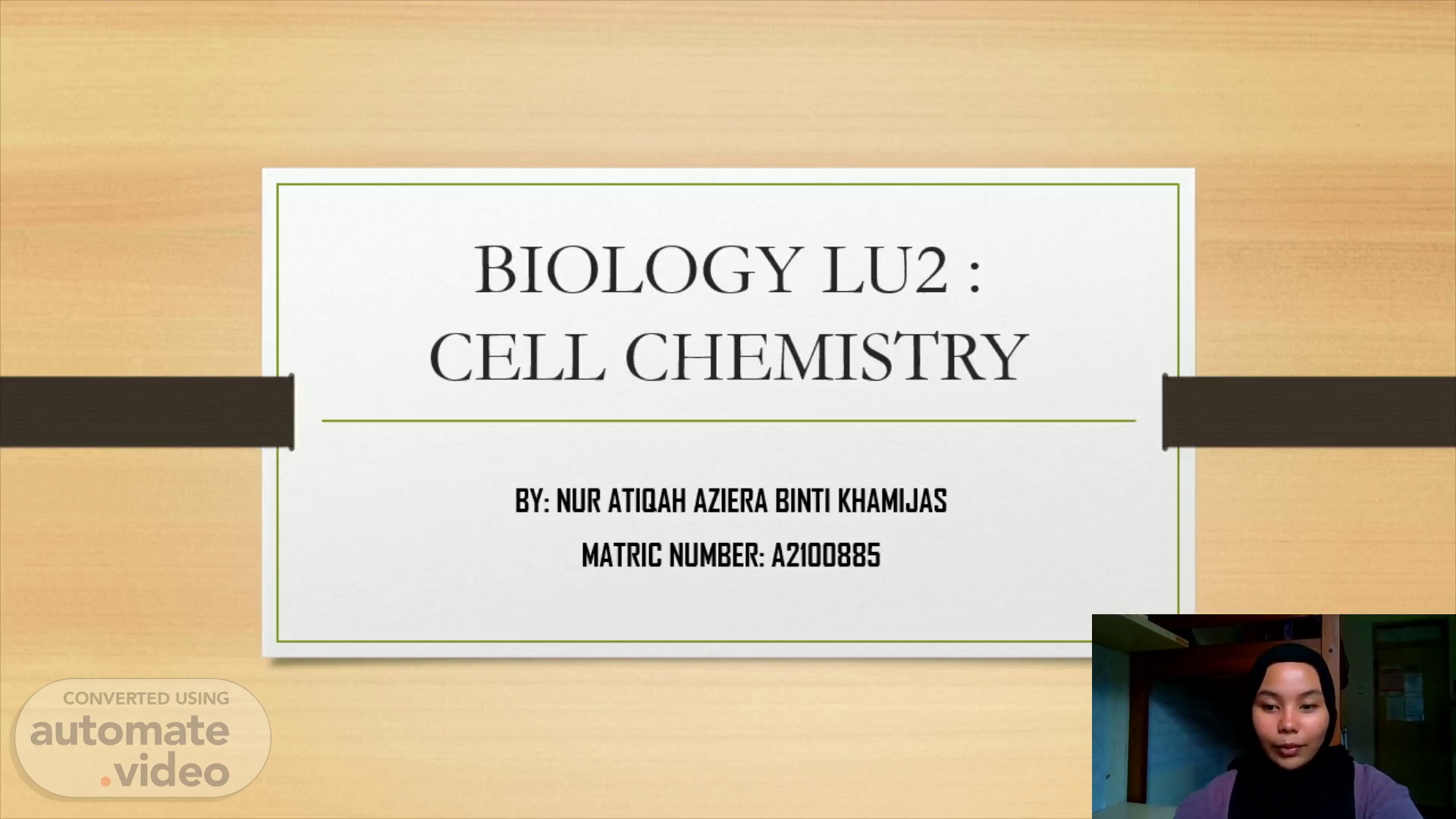
BIOLOGY LU2 : CELL CHEMISTRY
Scene 1 (0s)
A2100885 NUR ATIQAH AZIERA
Scene 2 (6s)
Carbohydrates (also called saccharides) are molecular compounds made from just three elements: carbon, hydrogen , and oxygen ..
Scene 3 (25s)
CARBOHYDRATES. 1. MONOSACCHARIDES Monosaccharides are the simplest carbohydrates and are often called single sugars. They are the building blocks from which all bigger carbohydrates are made . Monosaccharides have the general molecular formula (CH 2 O) n, where n can be 3, 5 , or 6. They can be classified according to the number of carbon atoms in a molecule:.
Scene 4 (1m 7s)
CARBOHYDRATES 1. MONOSACCHARIDES. If the carbonyl group (C=O) is at the end of a chain it is called an aldehyde If the carbonyl group is at the middle of a chain, it is called a ketone.
Scene 5 (1m 19s)
CARBOHYDRATES. 2. DISACCHARIDES The three most important disaccharides are sucrose, lactose , and maltose. They are formed from the forms of the appropriate monosaccharides. Sucrose is a non-reducing sugar. Lactose and maltose are reducing sugars..
Scene 6 (2m 1s)
CARBOHYDRATES. 2. DISACCHARIDES Formation by condensation of two monosaccharide units..
Scene 7 (2m 13s)
CARBOHYDRATES. POLYSACCHARIDES Large, complex carbohydrate molecule containing three or more monosaccharides. Organisms use polysaccharides to store energy and hydrolyzed as needed to provide sugar for cells. Starch, glycogen , and cellulose are made from glucose monomers . Starch is a carbohydrate found in plants, while glycogen is the form of carbohydrate storage found in animals. Cellulose is a structural carbohydrate found in plants..
Scene 8 (2m 40s)
CARBOHYDRATES 3. POLYSACCHARIDES (STARCH). Starch is an example of a polysaccharide in plants Plant cells store starch for energy Potatoes and grains are major sources of starch in the human diet Consists of many glucose monosaccharides linked together in both linear and branched forms. Insoluble in water and serve as storage depots of glucose. Plant convert excess glucose into starch for storage..
Scene 9 (3m 5s)
CARBOHYDRATES 3. POLYSACCHARIDES (STARCH). Mixture of amylose and amylopectin. Amylose consists of straight chains with several hundred units of glucose. Amylopectin differs from amylose in that it is highly branched. There are several thousands of glucose residues in its molecule..
Scene 10 (3m 22s)
CARBOHYDRATES. POLYSACCHARIDES (GLYCOGEN) Glycogen is an example of a polysaccharide in animals Animals store excess sugar in the form of glycogen Glycogen is similar in structure to starch because BOTH are made of glucose monomers Similar to amylopectin structure but the branches in glycogen are shorter and more in number compared to amylopectin. In the liver and muscles, the glycogen is broken down or reconverted into glucose when energy is needed, in a process called glycogenolysis..
Scene 11 (3m 52s)
CARBOHYDRATES 3. POLYSACCHARIDES (CELLULOSE). Cellulose is the most abundant organic compound on Earth. It forms cable-like fibrils in the tough walls that enclose plants. It is a major component of wood. It is also known as dietary fiber . Molecule is arranged in a straight and flip-flop manner. No side chains or branches in cellulose such as those found in starch, allow linear molecules to lie close together..
Scene 12 (4m 17s)
THANK YOU!!.